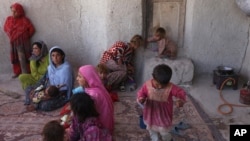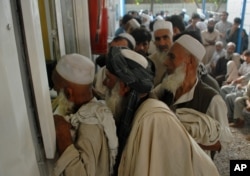The United Nations appealed Saturday for $550 million in humanitarian assistance in 2017 to meet the needs of Afghans affected by conflict, or natural disasters, and for those returning home from neighboring countries.
The assistance will reach an estimated 5.7 million “most vulnerable and marginalized” people in Afghanistan, said U.N. Humanitarian Coordinator, Mark Bowden, while launching the appeal in Kabul.
He noted that an estimated one million Afghans have returned home from neighboring Pakistan and Iran in the last year, while more than 600,000 people fled their homes internally due to conflict.
Large-scale migration
With the exception of Syria”, he observed, there have been no other movements of people of this scale elsewhere in the world.
“While the movement of people has created exceptional levels of need, we cannot ignore the fact the civilians continue to be the most affected by conflict, with women and children being most at risk,” Bowden noted.
Swedish ambassador to Kabul Anders Sjoberg praised the service of aid workers under extremely challenging conditions in Afghanistan, though he admitted the humanitarian effort has largely failed.
“Let us also acknowledge that we've been doing this work in Afghanistan for too long. This is a failure in itself. Humanitarian aid is not short-term anymore, it has, unfortunately, become a ‘Band-aid’ for the unresolved conflict,” Sjoberg said.
He underscored the need to not allow humanitarian aid “to contribute to cementing the conflict” and called for investing more efforts into finding an early solution to the Afghan war.
Lives at risk
Sjoberg said the current scope of need in Afghanistan calls upon the humanitarian community to deliver increased levels of assistance to ensure the lives of many Afghans are not endangered.
Bowden projected that 9.3 million people, about one-third of the population, in Afghanistan will require humanitarian assistance in 2017. That's a 13-percent increase from last year.
The U.N. humanitarian agency says persistent underlying poverty and widespread violence continue to disrupt access to basic health care in Afghanistan, where roughly 40 percent of the population is out of reach of the national health service, and an estimated one million children suffer from acute malnourishment.










